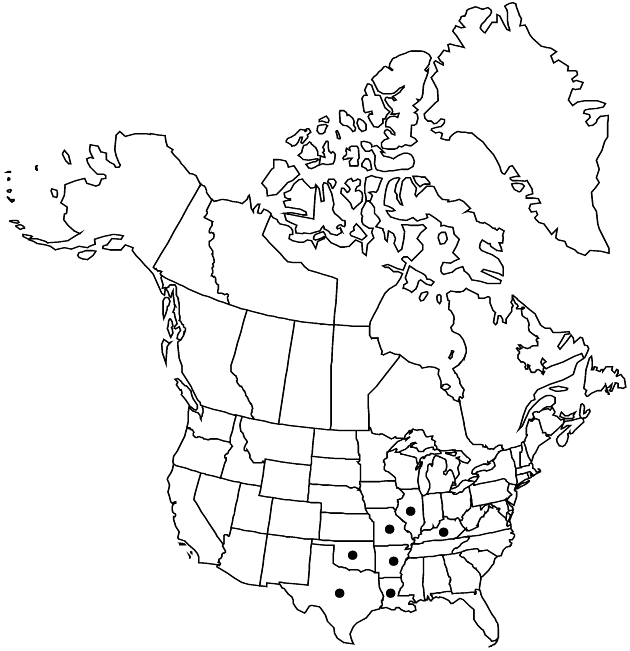Rudbeckia missouriensis
Biltmore Bot. Stud. 1: 17. 1901.
Perennials, to 80 cm (not rhizomatous, not stoloniferous, rosettes at bases of aerial stems). Stems (branches ascending) moderately hirsute (hairs spreading, 1+ mm). Leaves: blades linear to spatulate (not lobed), bases attenuate to cuneate, margins entire or remotely serrulate, apices acute to rounded, faces hirsute; basal petiolate, 5–20 × 0.5–2 cm; cauline petiolate (proximal) or sessile (distal), 2–15 × 0.4–1.5 cm. Heads borne singly or (2–12) in loose, corymbiform arrays. Phyllaries to 1.5 cm (faces hairy, more densely abaxially). Receptacles mostly hemispheric; paleae 5–6.5 mm, apices rounded to acute, abaxial tips glabrous. Ray florets 9–15; laminae elliptic to oblanceolate, 10–25 × 5–8 mm, abaxially sparsely strigose. Discs 8–15 × 10–17 mm. Disc florets 150–250+; corollas proximally greenish yellow, distally purple brown, 4–5.5 mm; style branches ca. 1.5 mm, apices obtuse. Cypselae 1.5–2.7 mm; pappi coroniform, ca. 0.1 mm. 2n = 38.
Phenology: Flowering late spring–fall.
Habitat: Dry, rocky prairies, limestone glades
Elevation: 10–80 m
Distribution

Ark., Ill., Ky., La., Mo., Okla., Tex.
Discussion
Selected References
None.
